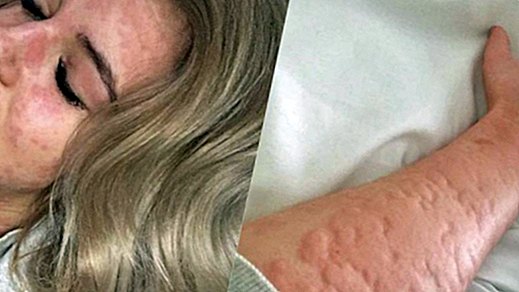House dust allergy: symptoms and treatment

What is a house dust allergy?
In a house dust allergy (actually: house dust mite allergy) sufferers allergic to mite faeces. The microscopic animals are usually present in house dust. The symptoms of the allergy (eg cough and sneeze) are similar to those of hay fever, a cold or a detergent allergy. Medicines can alleviate the symptoms In the long term, house dust allergy can best be treated by hyposensitization. In addition, it helps to reduce house dust as much as possible.
Approximately Ten percent of all Germans are allergic to the feces of house dust mites. The house dust allergy is therefore one of the most common allergies in Germany in addition to the classic pollen allergy. It can be determined by a prick test.
Am I only affected by a mite allergy because of bad hygiene?
Unlike one might think at first, mites are among the typical human "roommates". The animals feed on dead skin cells and do not transmit diseases. Avoiding them altogether to avoid allergic reactions is almost impossible.
The dust mites dry out quickly and then disintegrate into tiny particles, which in turn mix with the house dust. And this not only collects on the floor, but also clearly visible? It is also on cushions and blankets, for example. If these textiles are shaken up, the dust swirls up and gets into the breathing air. Therefore, it is helpful to reduce visible house dust as much as possible, but you will not be symptom free.
Allergic: What symptoms occur in the house dust mite allergy?
Since the symptoms of an allergy to dust mites are similar to those of a cold, it is not easy to distinguish the two diseases. The following complaints occur with the house dust allergy:
- Nose clogged (runny nose often indicates hay fever)
- cough
- sneezing
- itchy and watery eyes
- a headache
- Sore throat
- skin reactions
- Shortness of breath (in severe cases)
At night and in the early morning, the burden of mites is usually highest ? Therefore, a house dust allergy can quickly lead to sleep disorders. By the way, you can find even more allergy symptoms here.
Spray solution and co .: How to treat a house dust allergy
There are two different ways To treat house-dust allergy symptoms:
Short-term treatment
It's all about alleviate the symptoms of mite allergy. Here the doctor can prescribe drugs with so-called histamines, which are generally used in allergies. For example, a nasal spray and eye drops from the pharmacy can also help.
Long-term treatment
For the long-term treatment is especially the hyposensitization. For that you have to bring a lot of patience, but it's worth it: Treatment helps to minimize the symptoms. Hyposensitization also helps with other allergies such as hay fever or an insect venom allergy.
Tips: What else can I do against house dust mites?
Although it is not possible to ban the house dust mite completely from the apartment, there are a few tips to reduce the burden:
- Wash bed linen often:preferably every two weeks at 60 degrees
- Buy Encasings ? These coatings are mite-impermeable and are even adopted by some health insurance companies in allergic reactions
- Do not keep pets ? Those who can not do without it should not let the animals into the bedroom
- Clean the dust collector regularly: Wipe smooth floors damp every two days and vacuum regularly
- Place pillows, stuffed animals and other textiles in the freezer for 24 hours
- Use mite spray on textiles ? These contain substances that make the food inedible for mites, which eventually causes them to die
- Thoroughly ventilate: Thoroughly at least three times a day for five minutes each
Video tip: Cold allergy: So extremely reacts a 21-year-old to minus degrees











